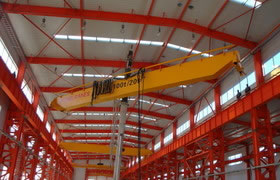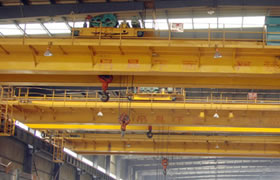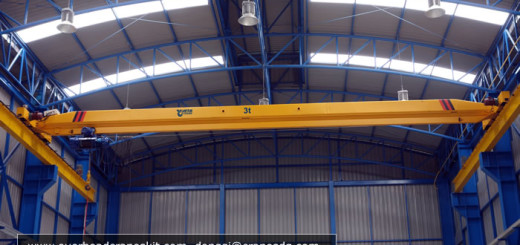What is the working speed of a single beam crane
The working speed of a single beam crane includes lifting speed, descent speed, walking speed, etc. There are differences between normal speed and slow speed. The work speed of each organization is determined according to the work needs, mainly considering the following factors.
Nature of the work
For cranes that work frequently or need to meet higher productivity requirements, the working speed of the mechanism is often high; for cranes that are used on the production line or even engaged in rhythmic continuous production, the working speed of the mechanism is compatible with the rhythm of production; Low speed is generally used for work-sporting institutions or institutions that only do adjustment work with little operation.
Use occasion
General purpose single-girder cranes use normal speed, and slow speed for assembly and overhaul installation; some crane mechanisms adopt speed control schemes to achieve full power utilization and increase productivity, low speed for full load and heavy load, and high speed for no load and light load. Lifting weight: high speed for small and medium lifting weights, low speed for heavy lifting weights, especially when there are two lifting mechanisms, the main lifting mechanism is generally significantly slower than the auxiliary lifting mechanism.
Size of working stroke
A crane with a large working stroke should use a higher speed, and a small working stroke should always use a lower speed. The principle is to make the mechanism have a working section that runs at a stable speed to avoid frequent occurrences of no acceleration and immediately transfer to the end. Decelerating operation is always in the situation of unstable operation.
Comprehensive balance effect
Especially for single-beam cranes with a certain periodic operation, the lifting mechanism and translation mechanism should be considered comprehensively when determining the working cycle diagram. One is to make full use of the possibility of two mechanisms operating at the same time; the other is to follow the better plan Make sure to save power and shorten the cycle time, so as to determine the working speed of each organization.
Commonly used single-girder cranes are generally operated at a speed of 20m/min by default, and 30m/min faster. If it is operated in the driver’s cab, the speed can reach 45 and 60 meters per minute.
The lifting speed, descent speed and trolley running speed of the single beam crane are determined by the electric hoist. The normal speed of the electric hoist under 5 tons is 8m/min and the slow speed is 0.8m/min. The lifting speed of 10 tons is 7m/min, and the slow speed is 0.7m/min. The operating speed of the electric hoist trolley under 10 tons is 20 or 30m/min, and the lifting speed of the electric hoist with a larger tonnage is 3.5 (0.35) m/min, and the operating speed is 18.
The working speed of a single-beam crane must ensure that the crane can run smoothly and safely, so compared to a double-beam crane, the speed is generally slower.




